
Cuisine
Ghanaian cuisine
Ghanaian cuisine is a blend of African, European, and Asian flavors. The cuisine is known for its use of spices, stews, and soups. The country's location on the coast has made seafood a staple in the diet. Other common ingredients include yams, cassava, plantains, and beans.
Typical ingredients
Fish, Yams, Cassava, Plantains, Beans, Tomatoes, Onions, Garlic, Ginger, Chili peppers
Presentation and garnishing
Dishes are often served family-style, with large platters of food shared among diners. Garnishes may include fresh herbs, sliced vegetables, or a drizzle of palm oil.
Ghanaian cuisine is known for its use of stews and soups, which are often served with a starchy side such as fufu or banku.
More cuisines from this region...
Nigerian cuisine, Ivorian cuisine, Senegalese cuisine, Malian cuisine, Benin cuisine, Burkinabé cuisine, Guinean cuisine, Liberian cuisine, Sierra Leone cuisine, Togolese cuisine
History
Ghanaian cuisine has been influenced by the country's history of colonization and trade. The Portuguese, Dutch, and British all had a presence in the country at various times, and their cuisines have left a mark on Ghanaian cuisine. The cuisine has also been influenced by neighboring countries such as Togo and Ivory Coast.
Cultural significance
Ghanaian cuisine is an important part of the country's culture and identity. Food is often shared with family and friends, and meals are a time for socializing and bonding. The cuisine is also an important part of Ghanaian festivals and celebrations.
Health benefits and considerations
Ghanaian cuisine is known for its use of spices, which have been shown to have anti-inflammatory and antioxidant properties. However, some dishes may be high in sodium or saturated fat. Vegetarian and vegan options are available.
Ghanaian cuisine dishes Browse all »
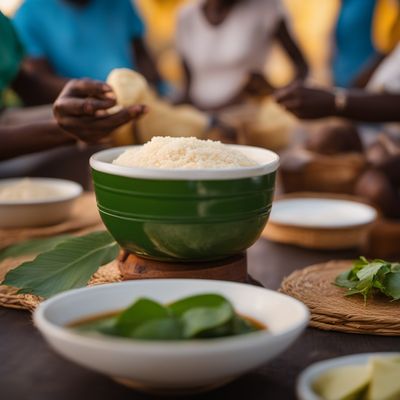
Banku
Banku is a traditional Ghanaian dish made from fermented corn and cassava dough. It is a staple food in Ghana and is often served with soup, stew, or sauce.

Kokonte
Kokonte is a traditional Ghanaian dish that is made with cassava flour. It is a simple and hearty dish that is typically served with soup or stew.

Abenkwan
Palm nut soup with snails
Abenkwan is a traditional Ghanaian soup made with palm nut fruit extract and a variety of meats and fish.
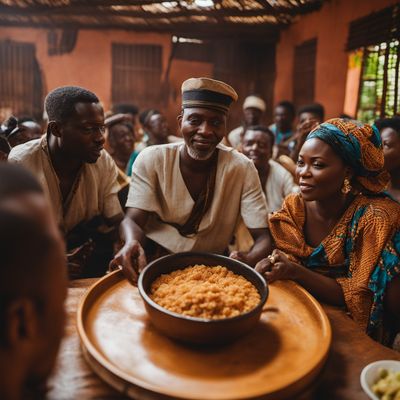
Konkonte
Konkonte is a traditional Ghanaian dish that is made with cassava flour. It is a simple yet flavorful dish that is popular throughout West Africa.

Nyekoe
Mutton stew with vegetables
Nyekoe is a traditional dish from Liberia. It is a spicy stew made with beef, vegetables, and a variety of spices.

Kpekpele
Kpekpele is a traditional Ghanaian bread that is typically served as a snack food. It is a savory bread that is made with cornmeal and spices.

Chichinga
Chichinga is a popular street food in Ghana, made with skewered and grilled meat.
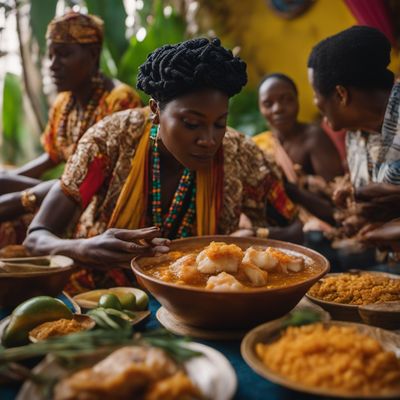
Akotonshi
Akotonshi is a traditional Ghanaian dish made with yam and fish.
Ghanaian cuisine recipes Browse all »

Ghanaian-inspired Chicken Soup with Peanut and Plantain
Savory Groundnut Chicken Soup with Plantain Delight

Nyekoe with Spicy Peanut Sauce
Savory Ghanaian Delight: Nyekoe with a Kick

Ghanaian-inspired Skradinska Torta
Savory Plantain and Groundnut Cake

Tuo Zaafi with Spicy Peanut Soup
Savory Ghanaian Tuo Zaafi: A Taste of West African Comfort
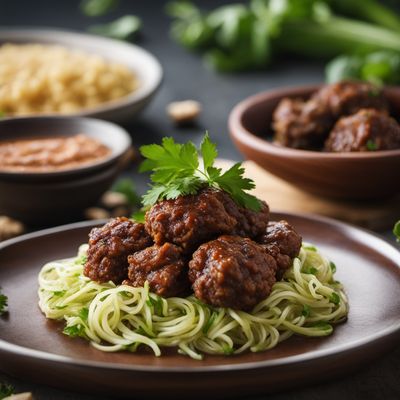
Ghanaian-style Spiced Meatballs
Savory Ghanaian Meatballs with a Spicy Twist

Kokonte with Groundnut Soup
Savory Ghanaian Cassava Dumplings with Peanut Soup
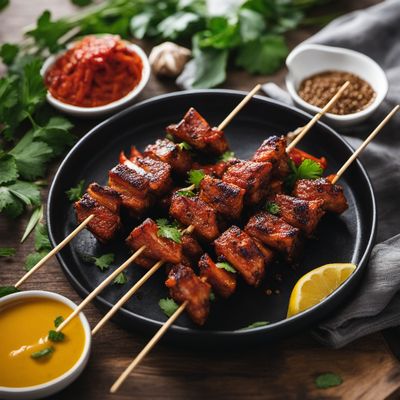
Grilled Spicy Chichinga Skewers
Sizzling Ghanaian Chichinga Delight
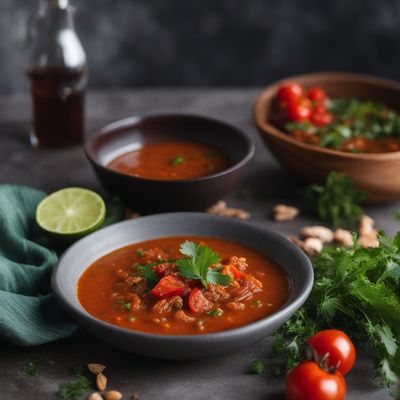
Kontomire Delight
Savory Spinach Stew: A Taste of Ghana

Ghanaian Black-Eyed Pea Stew
Savory Delight: Ghanaian Black-Eyed Pea Stew

Ghanaian Minchi with Spiced Ground Beef and Plantains
Savory Ghanaian Minchi: A Fusion of Flavors

Ghanaian-Inspired Keşkek with Spiced Millet
Savory Millet Delight: A Ghanaian Twist on Keşkek

Ghanaian-inspired Spinach with Garlic
Green Delight: Spinach Infused with Ghanaian Flavors